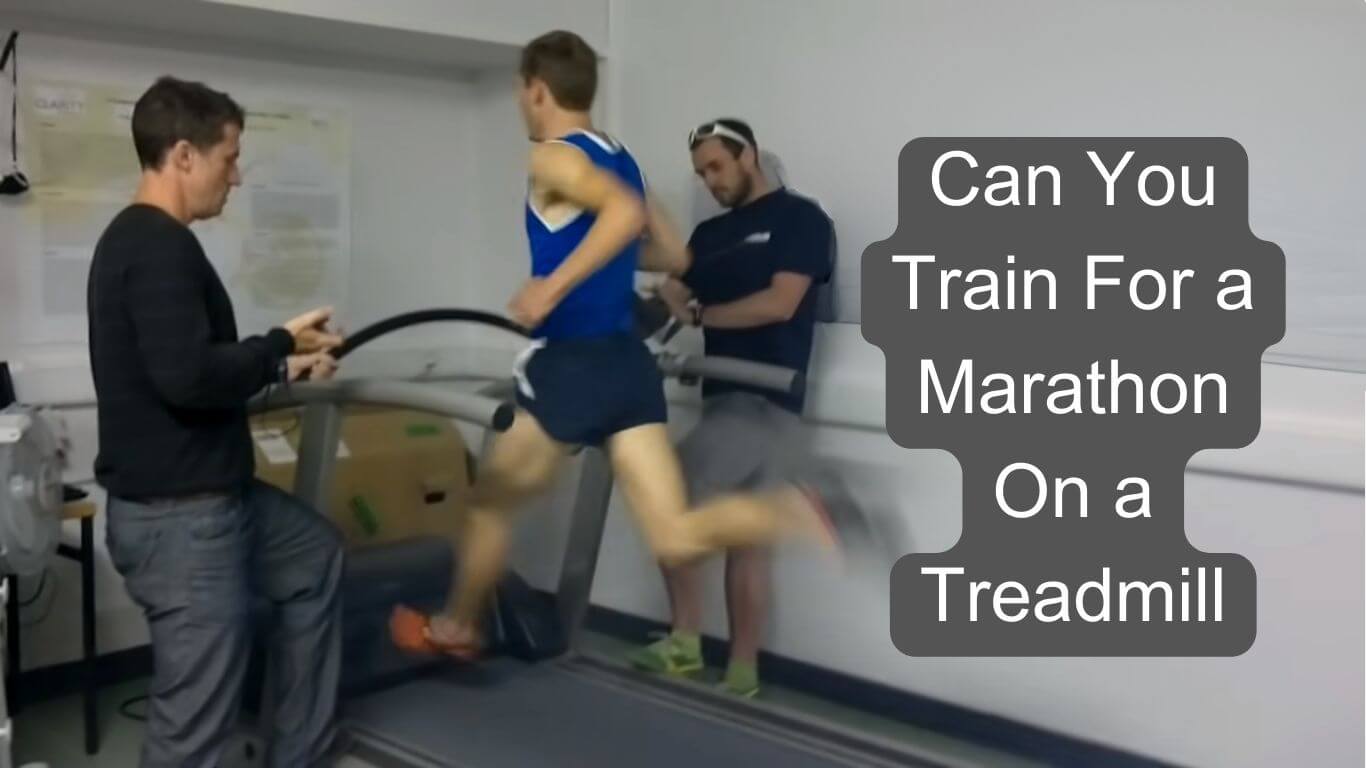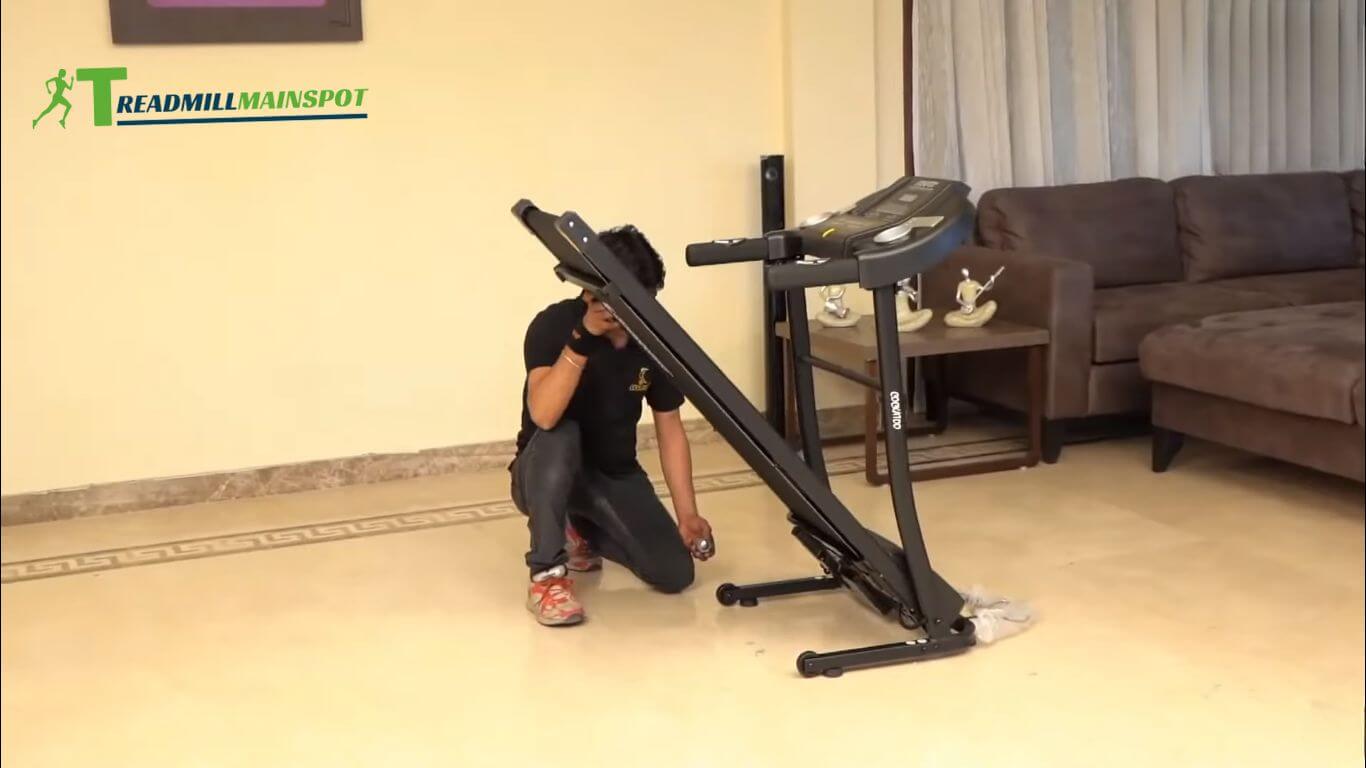Barefoot running on a treadmill may seem like an unusual idea, but it’s a trend that’s gaining popularity among fitness enthusiasts.
According to a recent survey, 60% of runners have tried barefoot running at some point, and many are now taking it to the next level by ditching their shoes on the treadmill.
But why is this trend gaining traction?
For starters, barefoot running on a treadmill can help strengthen the feet, improve balance, and reduce the risk of injury. In this article, we will explore the benefits and drawbacks of running barefoot on a treadmill and provide some tips on how to get started.
So if you are curious about trying this trend out, keep reading to learn more!
Is Running Barefoot on a Treadmill Okay?
Yes, it is okay to run barefoot on a treadmill.
Running on a treadmill barefoot is a minimalist running approach that can provide a unique experience for runners.
While some may prefer the cushioning and support of traditional trail running shoes, others argue that barefoot running can improve strength, balance, and form.

However, being cautious when attempting barefoot running on a treadmill is essential. Ensure the machine is clean and free of debris that could cause injury.
Also, start slowly and gradually build up your endurance, as barefoot running can stress your feet and calves more.
Running barefoot on a treadmill can be a safe and beneficial way to improve your running technique. Remember to listen to your body and take it slow to avoid injury.
Benefits Of Barefoot Running on a Treadmill
Running barefoot on a treadmill may seem unusual, but it can offer several benefits. From strengthening your feet and legs to improving your balance, here are five advantages of running barefoot on a treadmill.
Barefoot Running Strengthens Your Feet and Legs
Running without shoes requires your feet to work harder to support your body weight. As a result, the muscles in your feet and legs become more muscular, leading to better overall performance.
A study by Foodspings found that running barefoot engages the muscles in the feet and calves more than running in shoes, leading to a more effective workout.
Running Barefoot Leads to a More Natural Gait
Wearing treadmill running shoes can alter your gait, leading to an unnatural stride. Running barefoot allows your feet to move more naturally and can improve your overall gait.
Greg Lehman found that running barefoot on a treadmill can improve your running economy, meaning you use less energy to maintain a given pace.
Running Without Shoes Improves Your Balance
Running barefoot requires more balance and coordination than running in shoes. Running barefoot on a treadmill can improve your balance and stability, translating to better performance in other areas of your life.

Running barefoot on a treadmill improves participants’ postural stability, suggesting that it can be an effective way to improve balance.
It Improves Your Memory
Running barefoot on a treadmill may also offer cognitive benefits. A study by Science Daily found that running barefoot improved working memory performance in young adults.

While more research is needed to understand the mechanisms behind this effect, running barefoot could be a way to improve cognitive function.
Running Barefoot On a Treadmill Is Safer Than Running Barefoot On the Road
Running barefoot on a treadmill can be safer than running barefoot on the road. The treadmill belt provides a stable surface, reducing the risk of slipping or tripping.
Additionally, running on a treadmill without shoes can help prevent blisters and other foot injuries caused by shoes rubbing against your feet.
Drawbacks Of Running Barefoot On A Treadmill
Running barefoot on a treadmill can be tempting due to the convenience and connection with the ground.
However, it comes with several drawbacks that should be considered before making the switch.
Increase Your Risk Of Injuries
Running barefoot on a treadmill can increase your risk of injuries, especially if you are used to running with shoes. Shoes offer cushion and support that reduce the impact of running on your joints and muscles.
Without shoes, you are more likely to suffer from shin splints, stress fractures, and other injuries related to the mechanics of running barefoot. Repetitive running on a treadmill can exacerbate these issues, leading to more severe injuries.
It Causes Blisters and Burns
Running barefoot on a treadmill can cause blisters and burns on your feet. Treadmills are designed to be used with shoes, and the surface can be rough and abrasive on bare skin.
This can lead to blisters and burns, which can be painful and take time to heal. Moreover, sweat can make your feet slip on the treadmill, causing you to lose balance and fall.
Running Barefoot On the Treadmill Is Repetitive
Running barefoot on a treadmill can be repetitive, leading to muscle imbalances and overuse injuries.
The mechanics of running barefoot on a treadmill differ from running on the ground, and the lack of cushioning can place additional stress on your muscles and joints.
Over time, this can lead to muscle imbalances and overuse injuries, such as plantar fasciitis and Achilles tendonitis.
If you decide to run barefoot on a treadmill, start gradually and listen to your body to avoid injuries.
Tips For Running With No Shoes On A Treadmill
Running barefoot on a treadmill may seem odd, but it can be a beneficial and enjoyable experience for runners.
Here are some tips to help you make the most of your treadmill barefoot walking or running without shoes:
- Start Slowly: If you’re new to running without shoes, you must ease into it gradually. Begin by walking on the treadmill without shoes, then gradually increase the pace to a jog and run. This will help your feet and legs adjust to the new sensation of being without shoes.
- Focus on Form: When running without shoes, paying attention to your form is essential. Keep your feet landing softly, and use your leg muscles to absorb the impact of each step. This will help prevent injury and ensure you get the most out of your workout.
- Use a Soft Surface: Running without shoes on a hard surface can be painful and damaging to your feet. Instead, use a treadmill with a soft surface or a cushioned mat to provide extra support and comfort.
- Keep it Clean: When running without shoes, it’s essential to keep your feet and the treadmill clean. This will help prevent the buildup of bacteria and fungus, which can cause infections.
- Consider Barefoot Shoes: If you’re not ready to go without shoes, consider investing in minimalist or barefoot shoes. These shoes offer a barefoot-like experience while still providing some protection and support.
- Listen to Your Body: As with any exercise, it’s essential to listen to your body when running without shoes. If you experience pain or discomfort, stop and rest. This will help prevent injury and ensure you can continue enjoying the benefits of barefoot running for years to come.
By following these tips and listening to your body, you can enjoy the benefits of running without shoes while minimizing the risk of injury.
Frequently Asked Questions
Wrapping Up!
Running barefoot on a treadmill can be a unique experience for fitness enthusiasts who want to try something new. It offers increased foot strength, improved balance, and enhanced proprioception.
However, starting slowly and listening to your body to avoid injuries is essential. If you prefer a less intense workout, try walking barefoot on a treadmill. Always remember to keep the treadmill clean to prevent any potential infections.
Have you tried running barefoot on a treadmill? How was your experience? Let us know in the comments below.



